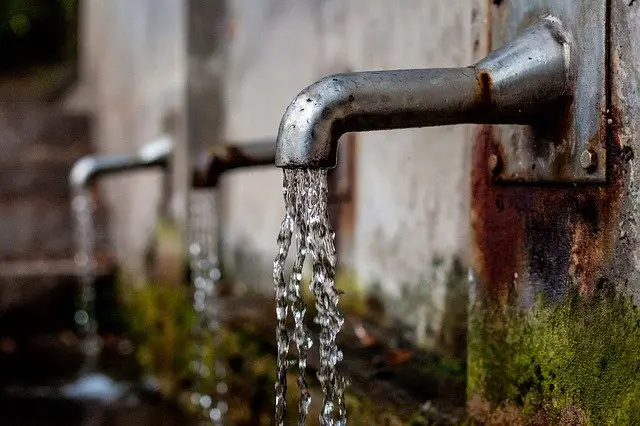Are you a bottled water fan or do you prefer drinking tap water? If the latter is the case, it could be important to check the quality of the water you consume every day, in order to make sure that it doesn’t contain harmful contaminants. Why, you ask? Certainly our tap water is thoroughly tested before it gets distributed to our homes, right?
Yes and no. The quality of tap water – that means after it has been treated and before distribution – is regulated by the U.S. Environmental Protection Agency (EPA) under the Safe Drinking Water Act (SDWA). And that is all well and good, but unfortunately there is a big difference between setting regulatory rules and realizing them…
Water Quality of Public-Supply Systems
To find out how good the quality of our drinking water really is, the U.S. Geological Survey (USGS) conducted a major study researching the “Quality of Water from Public-Supply Wells in the United States” in the years 1993 – 2007. A total of 932 water samples were assessed from public-supply systems located all over the country. Listed below are a couple of the scientist’s disturbing findings:
- More than 300 chemical contaminants were analyzed. 279 (83%) of them were not regulated by the Safe Drinking Water Act at the time the study was conducted.
- 1 in 5 untreated water samples contained at least 1 chemical contaminant at concentrations above governmental regulatory benchmarks.
- 1% of untreated samples contained 10 contaminants at concentrations above human-health benchmarks. Half of the contaminants were unregulated.
- The scientists found a total of 45 different organic contaminants (inorganic ones not included) in 94 already treated groundwater samples.
Considering the fact that 105 million US citizens (one third of the country’s population) receive drinking water from public water systems relying on groundwater, this sounds like a serious threat to public health. But in order to not spread any false or misleading information, it is also important to point out the following:
- In the study cited above, every substance except water molecules themselves were referred to as “contaminants”. This also includes naturally occurring minerals, organic molecules, etc. For instance:
- Most of the 44 inorganic contaminants analyzed occur in water naturally. Although, concentrations of those contaminants in groundwater may be altered by human activities (e.g. agriculture).
This make things look a little better, doesn’t it? Again, yes and no. Because the scientists that conducted the study also pointed out that most of the organic contaminants, like pesticides and manufacturing additives, are actually man-made and they add up to a total number of 293.
What Can You Do?
The goal of this article is not to spread panic, but to raise awareness to the problem of tap water contamination and offer a viable solution. So, if you want to become active, what can you do?
- Visit this page.
- Enter your area’s zip code.
- Choose the local water supply system which provides you with water.
- If contaminants were found, we recommend you to run your water through a filter system before you consume it.
You can find more information on the most common water treatment systems below. Of course, you could also get your water tested by a professional laboratory, before you spend money elsewhere. The only problem is that you would have to get your water tested on a regular basis, because you never know if the quality deteriorates over time.
Common Water Treatment Systems
Deploying common water treatment systems sounds much more complicated than it really is. Depending on your preferences and budget, there are 3 options for you to choose from:
Option 1: Filter Pitcher
The easiest and most affordable option is to buy a water filter pitcher which reduces the amount of dissolved ions like chlorine, copper, zinc and cadmium among others, and also removes unpleasant odors and tastes.
Most filter pitchers use activated carbon to adsorb contaminants, which needs replacement approximately every 2 months. Since they are made from plastic, make sure to invest in a BPA-free pitcher.
The only drawback: A water filter pitcher does not remove nor reduce the amount of organic water contaminants.
The best known and probably most popular manufacturer for filter pitchers is BRITA. Their standard model costs less than $50 and replacement filters less than $5.
Option 2: Distiller
Your second option is using a water distiller. If you want to get a high-quality model that is not made out of cheap plastic, you have to invest $150 or more.
Distillers provide the purest kind of drinking water. In the treatment process, water is heated to 212° Fahrenheit (boiling point) to kill germs. Then it’s separated from impurities by vaporizing into a cooling coil, where the steam is cooled and condenses into pure H2O.
Many scientists and organizations (the WHO among them) criticize that distilled water is “too pure” and lacks essential minerals, most importantly calcium and magnesium. These are necessary for important body functions. The minerals are naturally dissolved in water and should not be removed. An easy way to work around water demineralization is to mix an electrolyte blend into the purified water before drinking.
What’s more is that the boiling process requires a good amount of energy. If you use a distiller to filter your water on a daily basis, expect your energy bills to go up.
Option 3: Reverse Osmosis
Option 3 is to purify your water by use of reverse osmosis. In contrast to water distillers, RO filter systems use water pressure to operate, which is much more energy efficient and the reason why we prefer them. Expect to spend $150 and more for a decent model.
APEC and iSpring are the most popular manufacturers on the market. But there are countless others. You have the choice between systems that come with 4, 5, 6 or even 7 filtration stages at a wide range of prices.
Water Contamination Is A Major Problem
Water contamination has become a major problem in the United States; there is no point in denying that. A USGS study has shown that although our tap water is regulated, there are many contaminants that can be found in it. If you want to protect yourself and your family from those possibly harmful substances, you have to act now.
There are a couple of water treatment systems available to you. Activated carbon filters remove dissolved ions, odors and tastes. Water distillers provide water as pure as it can be. And reverse osmosis filter systems remove up to 99% of all contaminants. Which option you choose depends on your budget and personal preferences. One thing is for certain, drinking unfiltered tap water is not an option.




